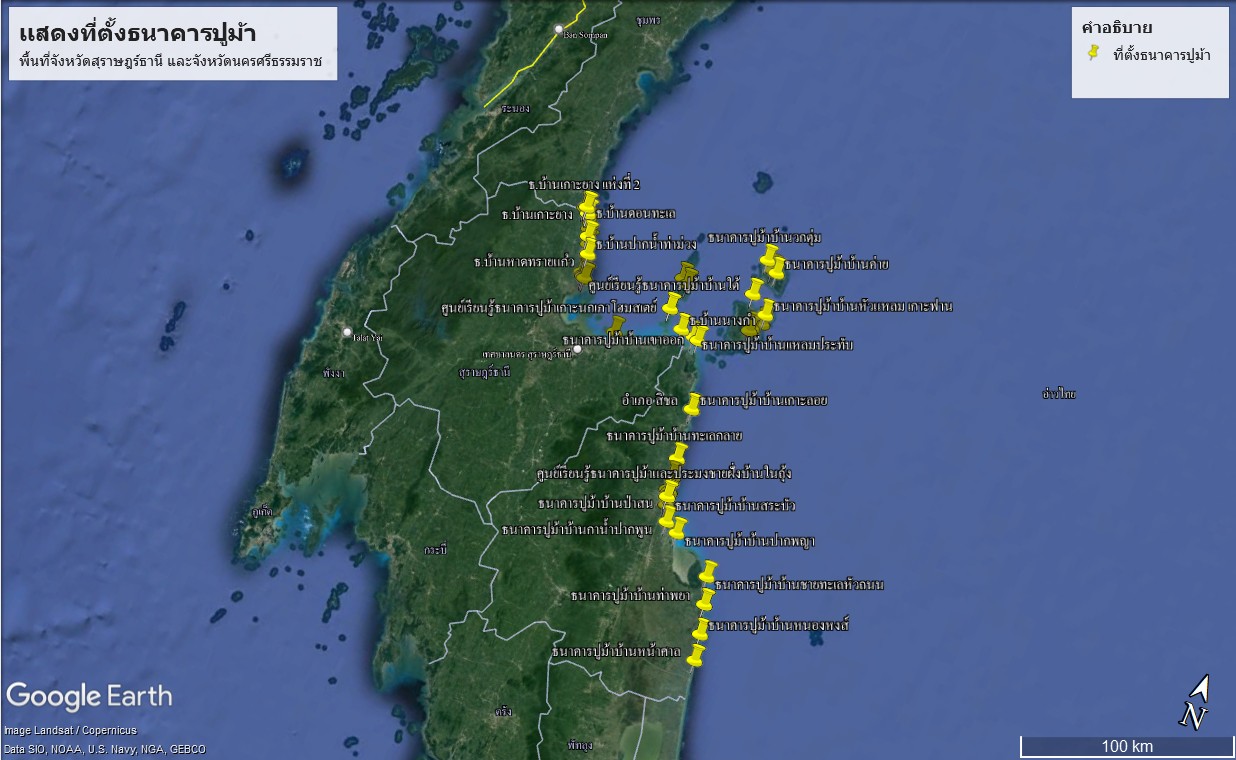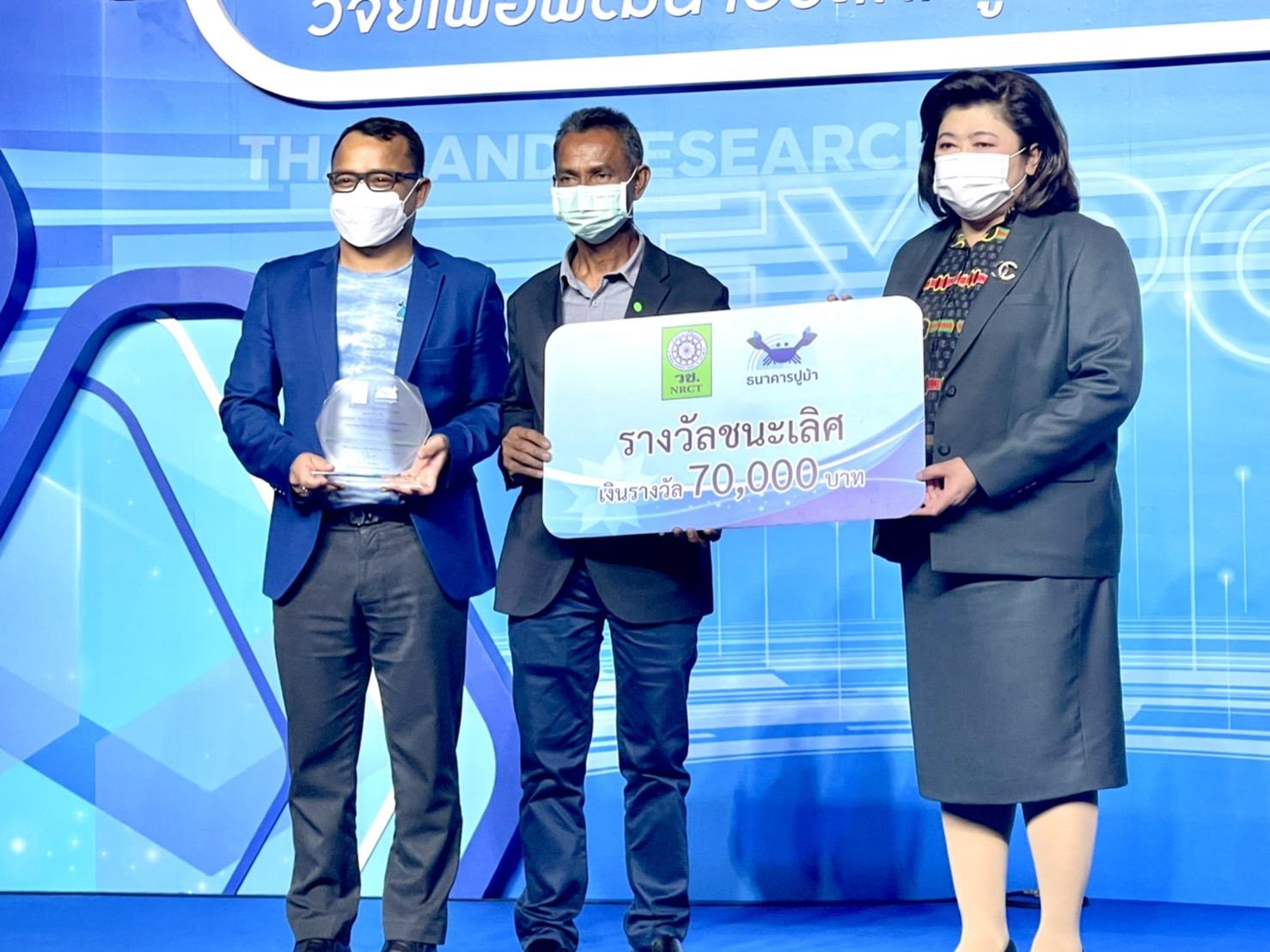WU collaborated with fisher communities and stakeholders restoring crab population in shared coastal ecosystem
Coastal area is a dominantly share ecosystem for all. In this area there are many species of Marine fish and shellfish which are important sources of protein and income, through fisheries, for the number of people in Thailand, particularly those who live along the coastlines. It is recognized that, nowadays, marine fishery resources, especially the Blue swimming crab (BSC), have become depleted due to high fishing pressure. The BSC is one of the most economic species of fishery industries in Thailand and is exported worldwide, with Thailand being the fifth largest exporter. Hence, the reduction in the abundance of this shellfish inevitably affects the fishers and all the supply-chain sectors, which eventually affects the country’s GDP from fishery products.
Walailak University (WU) is located in Nakhon Si Thammarat, and the academic service area corresponds the Southern Thailand, where the marine fishery is among the main occupation of the local people. From the needs assessment surveys and requests from the stakeholders in BSC fishery, in particular the fishers per se, Thai Frozen Foods Association, local crab-processing factories, Thai Food Processor Association, Department of Fisheries (DoF), and NGOs such as the Federation of Thai fisher folk association and Thai sea watch association.
In 2018-2022, WU launched a research project to improve BSC stock and fishery in the two main shared aquatic ecosystems in Nakhon Si Thammarat and Surat Thani Provinces. The additional benefit of such a project is an opportunity to get certification on fishery improvement standards, i.e., Fishery Improvement Projects (FIPs), which is an advantage to preventing international trade wall and extending global markets for BSC products of Thailand.
The project launched by WU is called “Crab Bank,” a community engagement project to answer social needs, build partnerships and strengthen stakeholder participation. Various organizations financially support this project, particularly the National Research Council of Thailand, the Agricultural Research Development Agency, and the Ministry of Science and Technology. The “Crab Bank” program takes the caught gravid females BSC in the rearing condition, allowing them to spawn and then releasing the zoea and young crabs back to the sea. Along with the “Crab Bank” project, several scientific studies to assess the condition of the BSC stocks to evaluate the fishing habitat and other relevant issues have also been conducted, which collaborate with the listed stakeholders and other academic institutes, i.e., other universities in Thailand, NFI crab council (USA), World Wildlife Fund and Marine Resources Assessment Group (MRAG). The scientific is now focusing on Bandon Bay, the biggest BSC fishing ground in the Gulf of Thailand.
Training and knowledge sharing are essential processes for exchanging information among stakeholders. The research findings related to crab restoration were discussed with stakeholders in several meetings at the fishery community and DoF offices (Figure 1). In addition, academic information about the “Crab bank” operation was distributed to fishers keen to volunteer for the project. The evaluation of the fisher’s understanding of crab bank was also examined.

Figure 1 Meeting to discuss and share research findings with experts and stakeholders from government and industrial sectors
In 2022, in cooperation with local fishermen, a total of 84 “Crab banks” were already constructed along coastal areas in Nakhon Si Thammarat and Surat Thani provinces (Figure 2-3). At each bank, more than ten fishers are involved. They act as both a committee and a donor of gravid female crabs, which means that there are at least 600 fisher volunteers in these areas, which significantly increased compared to before the project’s launching.
As a result of undertaking a project to preserve blue crab resources for sustainable use under the “Crab Bank” project in 2022 (2565 B.E.), WU’s implementation, in collaboration with local fishermen and stakeholders, won the best Crab Bank learning center (Figure 5), being a model of working with the community to maintain the fishery ecosystem, provided by the National Research Council of Thailand (NRCT).

Figure 2 Crab bank station was built in 84 fisher communities.

Figure 3 Locations that Crab bank was installed.

Figure 4 the best Crab Bank learning center Award
The societal impact related to sustainable development goals (SDG) of this project covered at least 5 topics which are life below water, decent work and economic growth, zero hunger, no poverty and partnerships for the goals. The short explanation of each topic is showed in following paragraph.


This momentous project can ensure all countries that want to import fishery products from Thailand that the aquatic products in Thailand are sustainably harvested. It is also planned to be a model for setting strategies for the management of blue swimming crab generation across Thailand. At the moment, fishermen across the Gulf of Thailand can catch blue swimming crabs in the amount of 10 kg per ship per day.

Figure 5 Increasing of catch rate of fishermen

Figure 6 The improvement of Fishery improvement project (FIP) Scoring from C to A level.
Source: https://fisheryprogress.org

Figure 7 Stakeholder participation

Figure 8 Releasing crab larvae activity
Goal 14: Life below water
Goal 4: Quality education
Goal 17: Partnerships for the Goals

